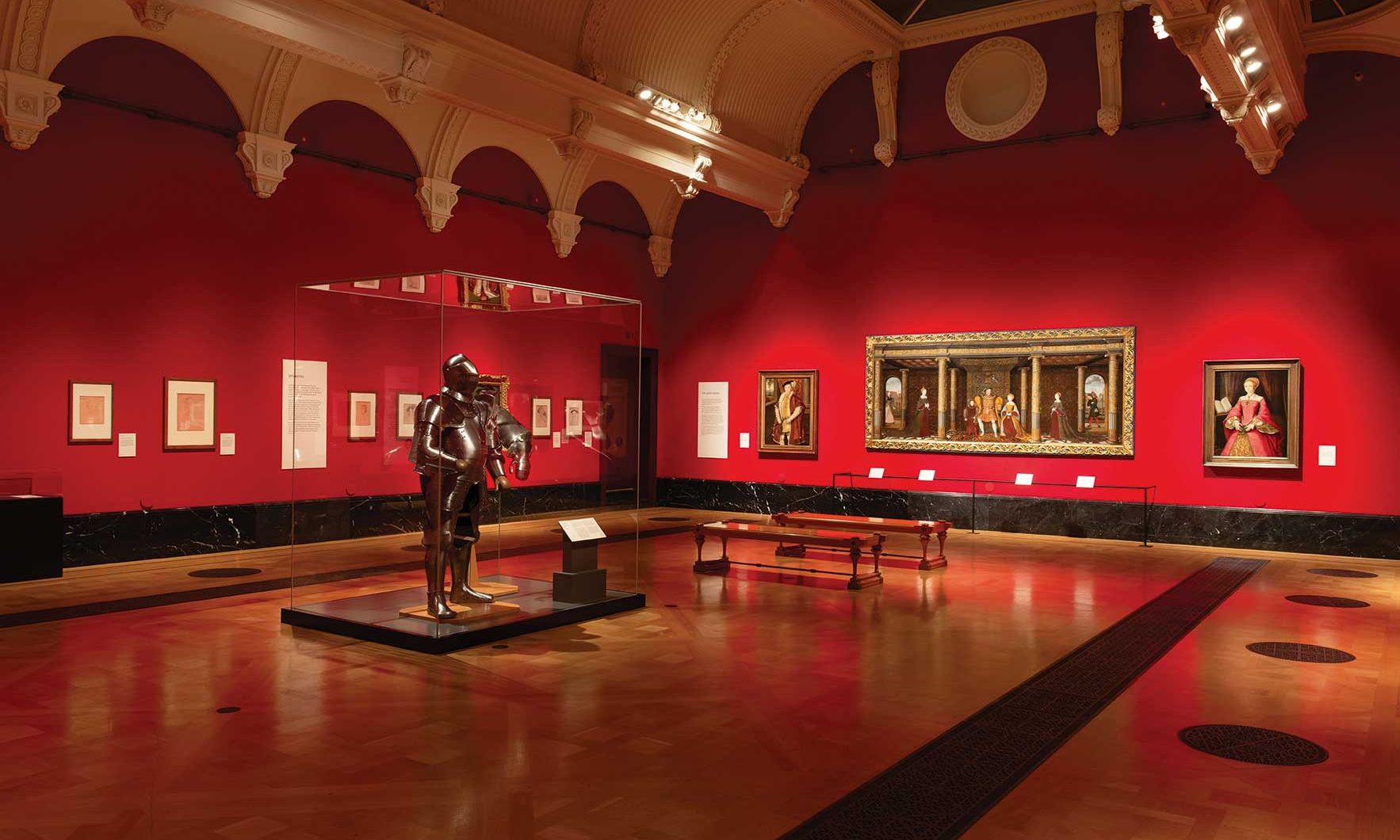The big draw: at the heart of the Holbein at the Tudor Court show are more than 40 penetrating portrait sketches
Royal Collection Trust © King Charles III
Judging by the queues I saw stretching outside the King’s Gallery (formerly the Queen’s Gallery), in London, I think we can declare the Royal Collection’s recent Holbein exhibition a blockbuster. Certainly, Holbein at the Tudor Court was excellent, as all Royal Collection shows are, and the Tudors are always popular. But there is evidently something about Holbein that resonates strongly with modern audiences. This is the third substantial London show in a decade to focus on Holbein’s portraits.
Holbein’s portrait drawings particularly capture our attention. The Royal Collection has 80, kept together in a “Great Booke” since the days of Henry VIII. As ever with Holbein, there is a sense of how did he do that?, thanks to the astonishing economy of his technique: sitters’ profiles rendered with a single, certain line of ink; cheekbones created by the slightest shade; and piercingly expressive eyes, which, up close, seem quite simply drawn. Holbein used paper coloured with a pink wash to save having to paint flesh tones, and he rarely includes the kind of costume detail we see in his finished paintings. But we cannot say his drawings are rushed; he was focused on capturing his sitters’ essential likeness, which is what helps make them so accessible today.
Because his drawings are so good, the temptation is to look beyond likeness, and wonder about character. Does Holbein’s determined Thomas More look like the sort of person who would give up everything to defend his Catholic faith? Does the impassive John Russell (“with one eye”, says the inscription) reveal the kind of man Henry VIII could rely on to ruthlessly dissolve the monasteries, and hang any monks who objected?
Most art historians would say we cannot be so subjective. We cannot rely on Holbein, recording a single moment and subject to the whims of patrons, to tell us what More and Russell were really like. But while it is right to remain objective, have we lost touch with one of the original purposes of Holbein’s drawings? We assume they were working objects towards a finished portrait in oil. But a surprisingly large number of Holbein’s drawings relate to no easel portrait. Those of Anne Boleyn and Mary Tudor, for example, are not drawn in a conventional portrait sitting, and seem observed from a distance. In England in the 1530s portraiture of Holbein’s quality was entirely new. For the first time, Tudor courtiers could examine themselves with greater fidelity than even in a mirror. The purposes of portraiture we understand today had not yet been established. For the Tudors, it must have been a moment of great wonder.
Before the fall: Hans Holbein the Younger’s Anne Boleyn (1533-36), drawn when she was queen
Royal Collection Trust © King Charles III
When Holbein’s drawings were first recorded in the Royal Collection they were called “paternes for phiosioneamyes”. Portraits were often called “physiognomies”, but elites in the 16th century were also interested in the science of physiognomy, the practice of discerning character from likeness. A widely read Renaissance text, the Secretum Secretorum (believed then to have been written by Aristotle), recommended physiognomy to Alexander the Great as a way of choosing his counsellors. Philostratus the Younger’s popular Imagines declares: “A true master [of portraiture] must have a good knowledge of human nature, he must be able to discern the signs of men’s character, even when they are silent.”
Did Holbein discern character? In Tudor times he was called “the Apelles of his age”, after Alexander the Great’s favourite artist. Apelles made portraits so lifelike that physiognomists could predict from them how long the sitters would live. Perhaps we cannot rule out that Holbein’s portraits were indeed commissioned with a search for character in mind. It would explain why, 500 years on, we still queue to see them.

